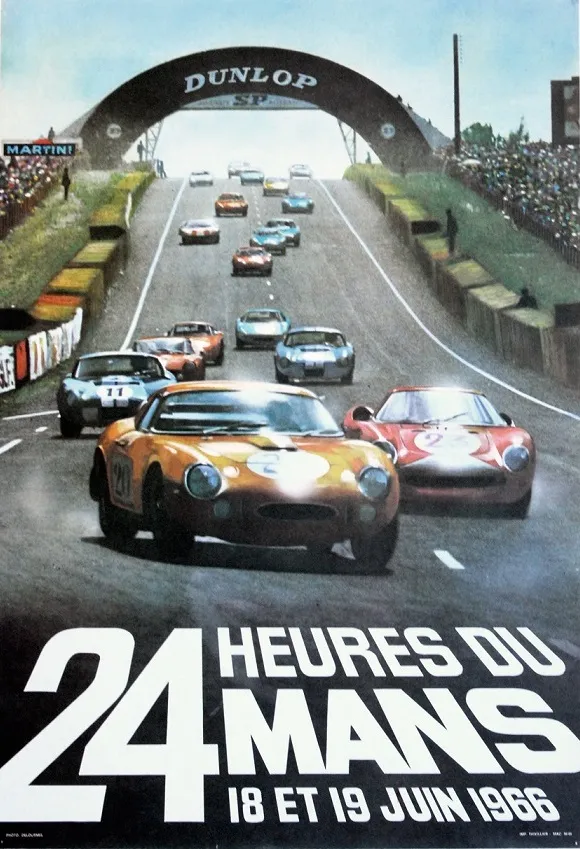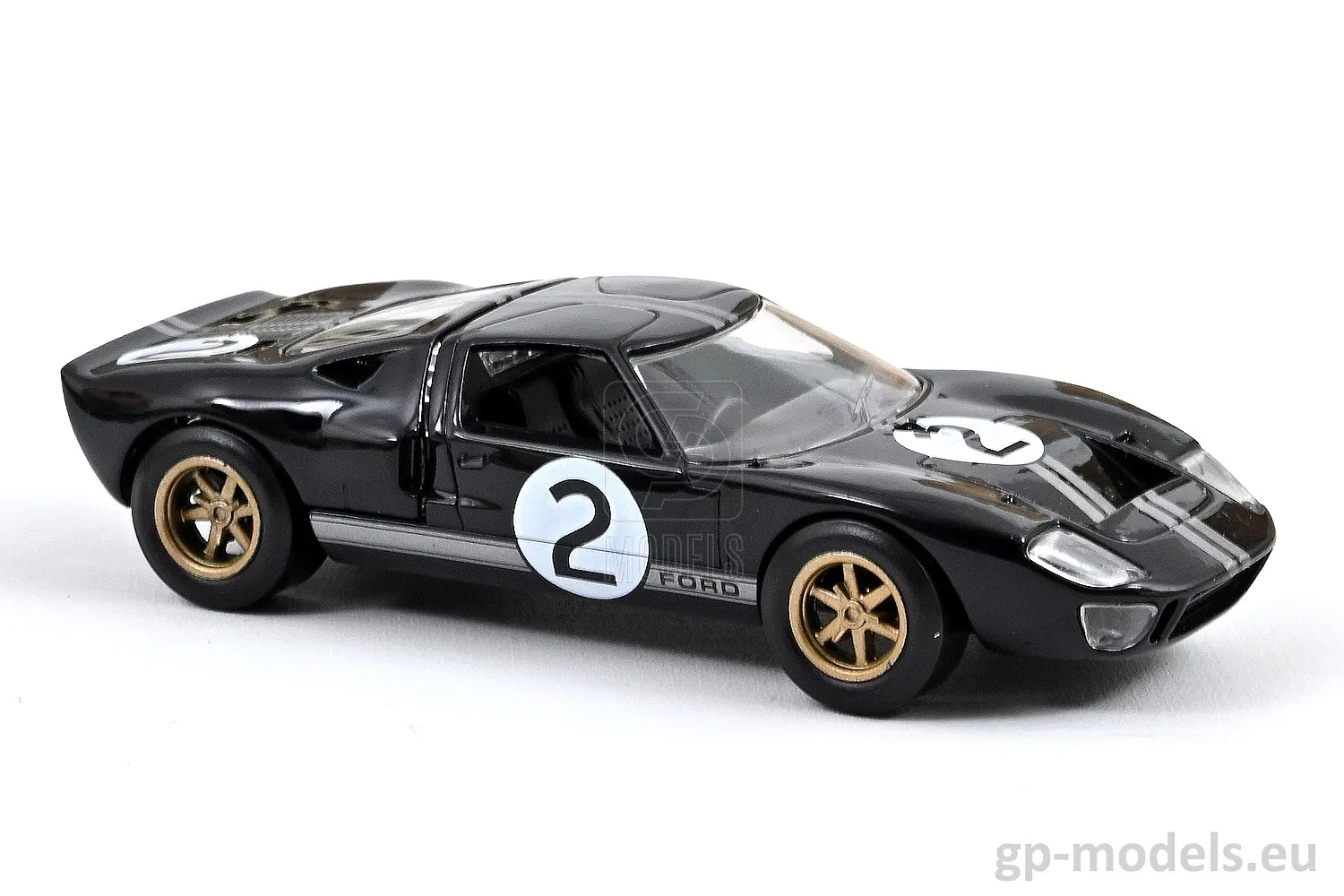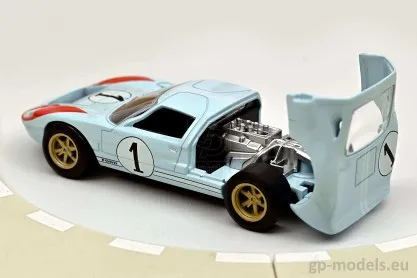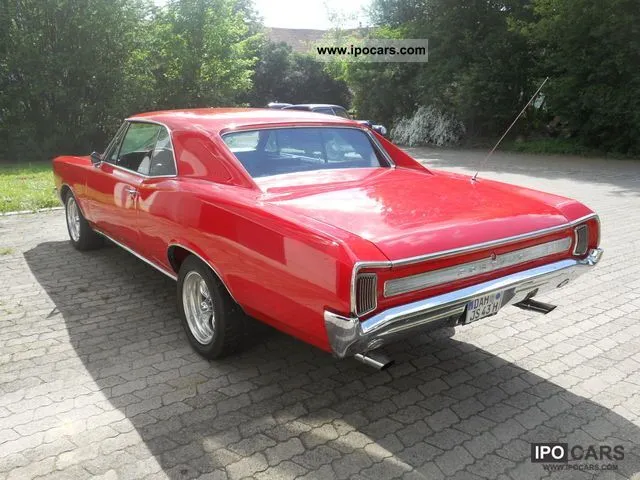Why Collect 1966 Le Mans Diecast
The allure of collecting diecast models, especially those representing iconic races like the 1966 Le Mans, goes beyond mere aesthetics. These miniature replicas are tangible links to automotive history, encapsulating the innovation, drama, and sheer speed of a bygone era. For collectors, each model car represents a meticulously crafted piece of art, a testament to the engineering prowess of the manufacturers and the skill of the drivers who pushed these machines to their limits. Furthermore, collecting 1966 Le Mans diecast models offers an investment opportunity, as certain rare and highly detailed models can appreciate in value over time. These models can also be a great conversation starter among fellow enthusiasts and a way to connect with the rich heritage of motorsports. Owning a collection of 1966 Le Mans diecast cars is not just a hobby, it’s a passion that celebrates the spirit of racing.
The Historic Significance of the 1966 Le Mans Race
The 1966 24 Hours of Le Mans is one of the most celebrated races in motorsport history, primarily due to the fierce competition between Ford and Ferrari. This event was a turning point for American automotive dominance in international racing, as Ford famously dethroned the reigning champion Ferrari. The race was more than just a competition, it was a battle of engineering, national pride, and strategic prowess. The victory of Ford, particularly the iconic GT40 MK II, marked a significant moment, symbolizing the triumph of American innovation and determination on the European racing stage. This race also witnessed incredible feats of endurance from drivers and vehicles alike, showcasing the pinnacle of automotive technology and the human spirit’s capacity for pushing boundaries. The lasting legacy of the 1966 Le Mans resonates through the years, making it a prime subject for diecast collectors and motorsport enthusiasts worldwide.
The Key Players and Cars of 1966

The 1966 Le Mans race was a clash of titans, with Ford and Ferrari leading the charge. Ford brought its powerful GT40 MK II, meticulously engineered to dominate the endurance race. Ferrari, the defending champion, countered with its innovative 330 P3, showcasing Italian craftsmanship and racing heritage. Other notable contenders included Porsche, with its lightweight and agile 906. The drivers were also instrumental to the narrative, with legends like Bruce McLaren, Chris Amon, and Phil Hill battling for victory. The race saw intense competition, with the lead changing hands multiple times. The GT40 MK II ultimately triumphed, securing a historic 1-2-3 finish for Ford, a testament to its engineering and strategic prowess, while the Ferrari teams fought hard and secured their legacy.
Ford GT40 MK II
The Ford GT40 MK II is arguably the most iconic car of the 1966 Le Mans race, embodying American determination and engineering excellence. It was designed with the singular goal of defeating Ferrari, and its performance in the race cemented its place in motorsport history. The GT40 MK II was known for its robust build, powerful engine (typically a 7.0-liter V8), and aerodynamic design, allowing it to achieve high speeds and endure the gruelling 24-hour race. Its victory at Le Mans not only demonstrated Ford’s engineering capabilities but also signaled a shift in the landscape of international motorsport. The GT40’s legacy continues to inspire car enthusiasts and collectors, making its diecast models highly sought-after and valuable.
About the Ford GT40 MK II Diecast Models
Diecast models of the Ford GT40 MK II offer collectors a chance to own a miniature replica of this legendary race car. These models are available in various scales, with the most common being 118 and 143. They often feature intricate details such as accurate paint schemes, sponsor decals, and detailed interiors that closely resemble the original car. High-quality models also include functional elements like opening doors, detailed engines, and realistic suspension systems. Diecast manufacturers strive to capture the GT40 MK II’s iconic design, including its low profile, distinctive front end, and powerful stance. Owning a GT40 MK II diecast is not just about having a model car; it’s about possessing a piece of racing history, beautifully recreated for display and admiration.
Key Features and Details to Look For

When choosing a Ford GT40 MK II diecast model, pay attention to the level of detail and accuracy. Check for precise paint finishes, detailed interior, and engine replicas. Authentic models will have accurate sponsor decals and racing numbers, reflecting the car’s appearance during the 1966 Le Mans race. Look for features like opening doors and hoods, which allow you to view the interior and engine. The wheels and tires should also accurately represent the originals. The model’s build quality is another critical factor; a well-made diecast will be made from high-quality materials, with a sturdy construction, providing durability and longevity. These details not only enhance the model’s visual appeal but also add to its collectibility and value. Focusing on these key features will help you select a diecast that truly captures the spirit and history of the Ford GT40 MK II.
Ferrari 330 P3
The Ferrari 330 P3 represented the pinnacle of Italian engineering in the 1966 Le Mans race. Although it didn’t secure a victory, the 330 P3’s performance and design captivated motorsport fans. It was known for its sleek, aerodynamic body, powerful V12 engine, and sophisticated engineering. The 330 P3 competed fiercely against the Ford GT40, showcasing Ferrari’s commitment to racing excellence. The car’s distinctive design and sound continue to be celebrated, making it a favorite among collectors. The 330 P3’s presence in the 1966 race highlighted the intense competition and the ingenuity of the teams involved. Diecast models of the 330 P3 offer a chance to celebrate Ferrari’s racing heritage.
About the Ferrari 330 P3 Diecast Models
Diecast models of the Ferrari 330 P3 capture the elegance and power of this iconic race car. These models are typically made with remarkable attention to detail, replicating the original car’s curves, paint schemes, and sponsor logos. Collectors can find models in various scales, each providing a different level of detail and display options. Many high-end models feature functional parts like opening doors, detailed engine compartments, and realistic interiors. The craftsmanship involved in recreating the 330 P3 ensures that each diecast model is a work of art, reflecting Ferrari’s legacy. Owning a 330 P3 diecast lets you experience the essence of Ferrari’s racing heritage.
Why This Car Was a Classic

The Ferrari 330 P3’s enduring legacy stems from its blend of performance, design, and racing history. The car’s sleek and aerodynamic profile, combined with its powerful V12 engine, made it a formidable competitor on the track. Despite not winning in 1966, the 330 P3’s performance and the spirit of the Ferrari team cemented its place in motorsport lore. The 330 P3’s design influenced subsequent racing car designs, and it remains a symbol of Italian automotive excellence. For collectors, owning a 330 P3 diecast is a way to pay tribute to its impact on racing and to appreciate the blend of art and engineering that defines Ferrari.
Porsche 906
The Porsche 906, also known as the Carrera 6, was a significant contender in the 1966 Le Mans race, representing Porsche’s engineering prowess. It was designed for lightness and agility. The 906’s nimble handling and reliability allowed it to compete effectively against more powerful cars. The Porsche 906’s design and performance underscored Porsche’s commitment to innovation and endurance racing. The 906’s compact design and efficient engine made it a formidable competitor. Diecast models of the 906 are a testament to the engineering behind the car.
About the Porsche 906 Diecast Models
Diecast models of the Porsche 906 provide collectors with an excellent opportunity to appreciate the detail of this iconic race car. These models come in various scales, often featuring accurate paint schemes, sponsor decals, and detailed interiors. High-quality Porsche 906 diecasts will have features such as opening doors and engine compartments, offering a detailed view of the car’s engineering. The models accurately reflect the 906’s aerodynamic design and compact dimensions. Owning a 906 diecast allows collectors to enjoy a piece of Porsche’s motorsport history.
The Appeal and Detail

The appeal of the Porsche 906 diecast lies in its representation of the car’s sleek design and racing heritage. Collectors often seek out models that replicate the original’s distinctive paint schemes and sponsor decals. High-quality diecasts feature meticulously detailed interiors and engine compartments, showcasing the car’s engineering. Collectors appreciate models that accurately capture the 906’s lightweight construction and aerodynamic profile. These details enhance the model’s visual appeal and value. For Porsche enthusiasts, owning a 906 diecast is a way to celebrate the car’s legacy in racing.
Choosing Your 1966 Le Mans Diecast
Selecting a 1966 Le Mans diecast model involves considering several factors to ensure you get a piece that meets your collecting needs. Assess the scale of the model; common scales include 1:18 and 1:43, each offering a different level of detail and display options. Consider the level of detail; Look for models with accurate paint schemes, sponsor decals, and interior details. Build quality is also essential; Choose models from reputable manufacturers known for using high-quality materials. Consider the rarity and value of the model. Limited-edition models often increase in value. Finally, research the model’s historical accuracy. Detailed research allows you to select models that truly reflect the historical accuracy.
Scale and Detail
The scale of a diecast model significantly impacts its level of detail and visual impact. Common scales for 1966 Le Mans diecast models include 1:18 and 1:43. 1:18 scale models offer more significant details, with more space for intricate features like opening doors, detailed engines, and realistic interiors. These models often provide a more immersive collecting experience. 1:43 scale models are smaller, making them ideal for displaying multiple models in limited spaces. These models still offer a reasonable level of detail, allowing collectors to build a varied collection without requiring extensive display space. The choice of scale depends on your preference for detail, display space, and collecting goals.
Material and Build Quality

Material and build quality are critical factors in assessing the value and longevity of a 1966 Le Mans diecast model. High-quality models are typically made from die-cast metal, providing a durable and realistic feel. Check for models with a sturdy construction, ensuring that the parts fit well and the paint finish is smooth. Look for detailed features like realistic wheels, tires, and interior components. Models with opening doors and functional features often indicate higher quality. The build quality influences not only the model’s visual appeal but also its ability to withstand handling and maintain its value over time. Models made with quality materials are more likely to maintain their value and provide lasting enjoyment.
The Value and Rarity of 1966 Le Mans Diecast
The value and rarity of 1966 Le Mans diecast models can vary significantly based on several factors. Limited-edition models, particularly those produced in small quantities, are often highly sought after by collectors, leading to higher prices. Models with historical significance, such as those representing winning cars or famous drivers, can command a premium. The condition of the model is also critical; models in mint condition with original packaging are more valuable. The manufacturer’s reputation and the level of detail also influence the model’s worth. Thorough research on the market and comparable sales will help you understand the current value. By understanding these factors, collectors can make informed decisions about acquiring and appreciating these historical pieces.
In conclusion, collecting 1966 Le Mans diecast models is a rewarding pursuit that connects enthusiasts with the rich history of motorsport. From the iconic Ford GT40 MK II to the elegant Ferrari 330 P3 and the agile Porsche 906, these miniature replicas capture the spirit of a pivotal race. By focusing on scale, detail, build quality, and historical accuracy, collectors can build a valuable and meaningful collection. Each model is a tangible link to the past, celebrating the ingenuity, courage, and drama of the 1966 Le Mans race.
